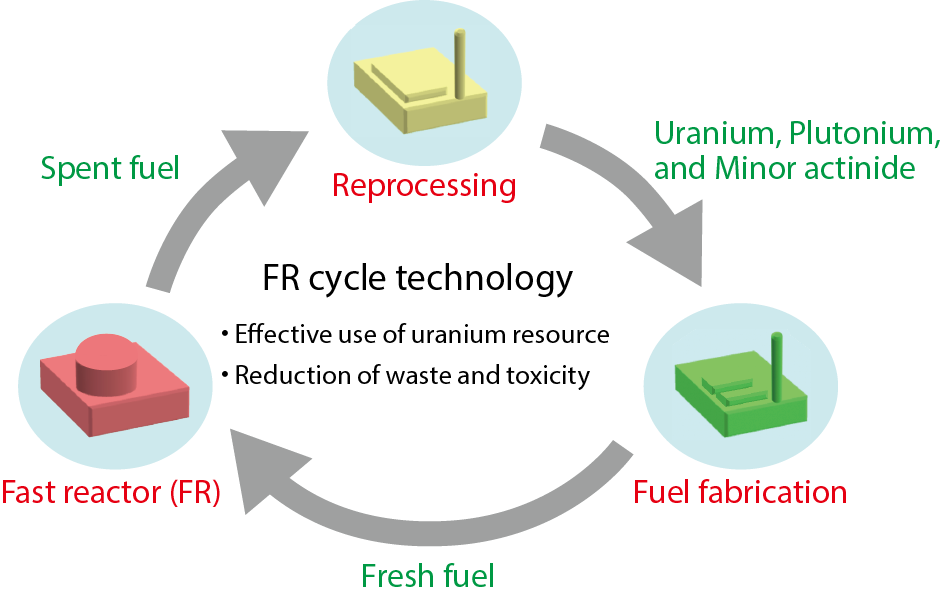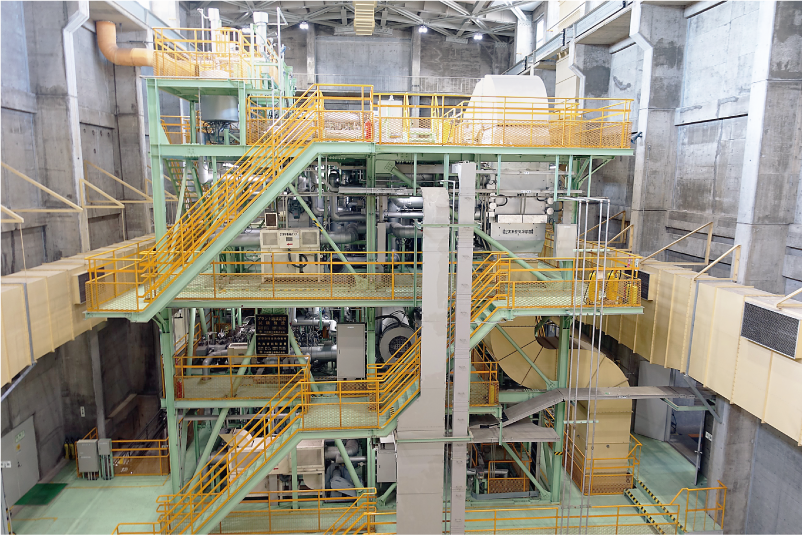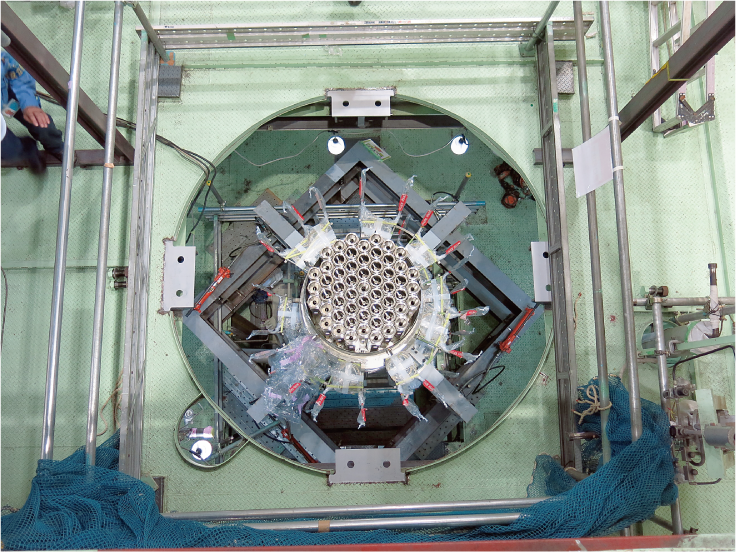
Fig.7-1 Fast reactor cycle

Fig.7-2 Plant-dynamics test loop

Fig.7-3 A test section simulating the core
A fast reactor cycle can dramatically increase the utilization efficiency of uranium resources for long-term nuclear-energy utilization (Fig.7-1). Our intension is to make the fast reactor cycle technology accepted to society. This technique aims to maximally decrease the risk of nuclear disasters that heavily release radioactive materials, such as the TEPCO’s Fukushima Daiichi NPS (1F) accident, and thus have the potential to facilitate the acceptance of nuclear technology in society. Moreover, we widely simulate the root causes of severe accidents including natural disasters and create an enhanced-safety concept through design with enhanced prevention and mitigation measures.
●Starting the test with the plant-dynamics test loop
Reactor-core-cooling technology that does not use active devices such as pumps has been developed to ensure cooling performance during accidents. Cooling tests for the core by natural circulation with a plant-dynamics test loop (PLANDTL which stands for PLANt Dynamics Test Loop) in Oarai (Fig.7-2), have been undertaken using a test section simulating the core of a sodium-cooled fast reactor (SFR) (Fig.7-3). These results show that the core can be cooled without fail, even in conditions of complete emergency-power loss, and these results can contribute to improving the safety of SFRs.
●Introduction to R&D results in each field
Measures to ensure high safety for SFRs are the same as those used in light-water reactors. Our objectives are to prevent severe accidents such as 1F by thoroughly pursuing stopping and cooling of reactors and confinement of radioactive materials, even during accidents, and to preform firm maintenance to prevent of failures or trouble based on an accurate understanding of reactor properties.
Regarding the safety of FRs, we have been preparing global standards and design guidelines in cooperation with all of the countries of the world (Topic 7-1). In these works, our objective is to enhance the safety of SFRs around the world.
We measure the properties of mixed-oxide fuels with plutonium and uranium, and perform studies to predict fuel behavior inside the reactor (Topics 7-2, 7-3, 7-4). From these results, the prediction accuracy of the safety or performance of reactors will be improved.
Maintenance technologies for preventing failure or trouble have also been developed. The study of maintenance program is being proceeded to be established, in which the degree of importance of each system and device for the safety is taken into account (Topic 7-5). From this study, rational inspection can be feasible for ensuring safety. This result, which is recognized as the standard of the American Nuclear Society, contributes to improving the safety of FRs around the world. Moreover, an inspection technology for maintenance of the heat-transfer tubes that serve as cooling-system components in steam generators has also been developed (Topic 7-6). This technology allows the finer defects of heat-transfer tubes to be detected with the expectation of preventing accidents or failure in advance.
As study for “confinement”, study for evaluating the phenomena of sodium contacting to concrete in the building in case of accidents is underway (Topic 7-7). Thus, the influence of the chemical reaction of sodium and concrete can be evaluated precisely, and confinement performance will be ensured.